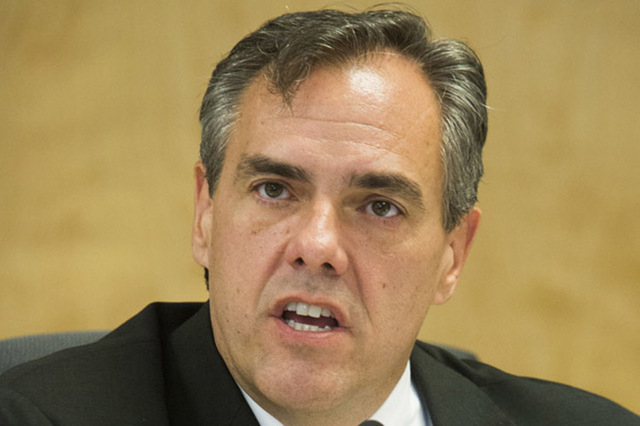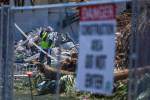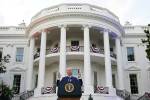Report: Grow tech jobs in Vegas, improve advanced education

Damien Patton has big plans for his Las Vegas operation.
The founder and CEO of Banjo, a company that develops social-media apps, opened an office here in 2013 to go with the Silicon Valley branch he launched in 2011. His goal: To build two locations with 80 to 90 workers each, with as many as 30 engineers in Las Vegas alone.
It was a growth plan that dovetailed nicely with the objectives of state officials, who during the recession crafted a plan to diversify Nevada’s tourism-reliant economy with new companies in science and technology.
But Patton’s plans haven’t worked out the way he wanted.
Local workers with the right science, technology, engineering and math — or STEM — skills are “nonexistent,” Patton discovered. How bad is Banjo’s local staffing struggle? The company has interviewed more than 100 STEM-related workers here, and found just two who are qualified. Instead of 30 engineers, Banjo’s southwest Las Vegas office is home almost exclusively to employees in sales and marketing, design and operations. The company has shifted its tech focus back to Silicon Valley, where it hired seven engineers on Friday alone.
But it doesn’t have to be that way, says a national think tank.
The Brookings Institution’s Metropolitan Policy Program and Brookings Mountain West will release their “Cracking the Code on STEM: A People Strategy for Nevada’s Economy” report during a panel discussion at The Innevation Center in southwest Las Vegas. The study details “an emerging shortage” of STEM-related workers across Nevada. And it’s not happening just among high-tech engineers.
Banjo is merely one example of how the labor shortage could hurt Nevada’s economic expansion. The STEM labor pool is also wanting in health care, aerospace, defense and other key sectors targeted by the Governor’s Office of Economic Development, Brookings experts said.
“Because your workers are not optimally trained, you have a drag on growth and a lack of opportunity for people who want the credentials to move into good jobs,” said Mark Muro, a senior fellow and policy director with the Brookings Metropolitan Policy Program and Washington director of Brookings Mountain West.
Local observers said they agreed with the findings of Brookings, which also co-published a 2011 study that became a blueprint for the sector strategies the Governor’s Office of Economic Development is pursuing.
“Brookings highlights very clearly that our school districts under-perform in the area of STEM education,” said Dale Erquiaga, Nevada’s superintendent of public instruction. “Students are not proficient in math and science, and proficiency actually declines from the early grades to high school. So this is an absolute message to the school districts that they need to improve instruction in math and science.”
‘TOP CONCERN’ FOR COMPANIES
Nevada schools have already made efforts to upgrade the curriculum, Erquiaga said. The state Board of Education has adopted the federal Common Core standards, designed to get kids college- and career-ready in language and math. It has adopted the National Research Council’s Next Generation Science Standards, and state education officials have spent the past four years updating career and technical education standards in STEM pathways, Erquiaga said.
But the Brookings study takes the next step with its emphasis on career readiness.
“K-12 education has assumed its job ends on graduation day. We don’t always think about what happens to students after that,” Erquiaga said. “This will help us pierce the veil between 12th grade and the post-secondary experience. Brookings has done a good job of putting preschool to grade 20 (advanced degrees) to work all in one big bucket.”
Jonas Peterson, chief operating officer of the Las Vegas Global Economic Alliance, said the report matches what the economic-development agency sees as a top concern among the companies it recruits.
“Our high-value companies are telling us loud and clear that the single most important factor in their next location decision is the work force,” said Peterson, who’s scheduled to participate in today’s panel. “If we’re successful in creating that labor pool, we’ll be successful in attracting those companies. We’ve got an economic-development strategy that’s working. Nevada’s rate of job creation per capita is among the highest in the country, and the level of planned capital investment is huge. There’s a track record there, and the time for us to create a true workforce development strategy is now.”
To do that, Nevada will need three things, the Brookings report said.
For starters, it needs a cohesive vision for its STEM economy.
“Right now, leaders in the state think it’s an issue because (Tesla founder) Elon Musk thinks it’s an issue,” Muro said, pointing to Musk’s commitment of $7.5 million a year to the state’s public-education system for five years to help create a work force for the $5 billion factory Tesla plans outside Reno.
The state also has to align STEM education with its economic goals so that training serves the needs of the sectors that officials want to recruit, the report said.
That’s been an issue for Banjo, which has found that Nevada-educated engineering grads here have learned tech platforms that are 20 to 30 years old, rather than studying mobile computing and cloud computing, a network-oriented platform that Patton said is the wave of the future for tech businesses.
Finally, the state has to provide “basic STEM education” that improves student outcomes, the study said.
ELEVATING JOB CREATION
Specific solutions in the report include appointing a “dedicated STEM champion” in the governor’s office, creating a competitive grant program for STEM education strategies, and launching a STEM work force challenge grant for industry-led training initiatives. Brookings also recommends incorporating computer science into the preschool-12 curriculum, as well as developing and funding a “powerful” statewide STEM marketing campaign and rolling out STEM internship programs led by regional development authorities such as the Las Vegas Global Economic Alliance.
The report doesn’t list a potential cost of the changes, but it contains two charts that rank strategies from “little to no cost” — such as changing the makeup of the state STEM Advisory Council or crafting clear guidelines for STEM education — to initiatives of “higher cost,” including creating a competitive grant program and developing a “powerful” state marketing campaign.
Erquiaga called the study’s focus on computer science in primary education “critical,” and said his department is willing to revise graduation standards to include the discipline. Officials also want to emphasize skills in critical thinking and problem-solving, he said.
Peterson said his alliance would embrace competitive grants and internship programs, and provide a “connector role” that will communicate emerging workforce needs among business clients to officials who craft the state’s STEM curriculum.
“This is a huge opportunity. If we implement this STEM strategy, we have a chance to elevate job creation and wages throughout Southern Nevada,” he said.
For Patton, a few tweaks to the college curriculum would make a huge difference. Swap out six engineering classes that cover the decades-old “legacy” systems that gaming and utility companies use, and replace them with courses in mobile and cloud computing.
“The biggest thing for me is, I’m bullish on Vegas,” said Patton, who’s lived here since 2002. “I want to make it happen. I’m spending my time volunteering as much as I can, but we have to put pressure on the infrastructure and schools to take things to the next level. If we don’t, we’re just going to go around in circles.”
Contact Jennifer Robison at jrobison@reviewjournal.com. Follow @J_Robison1 on Twitter.


















